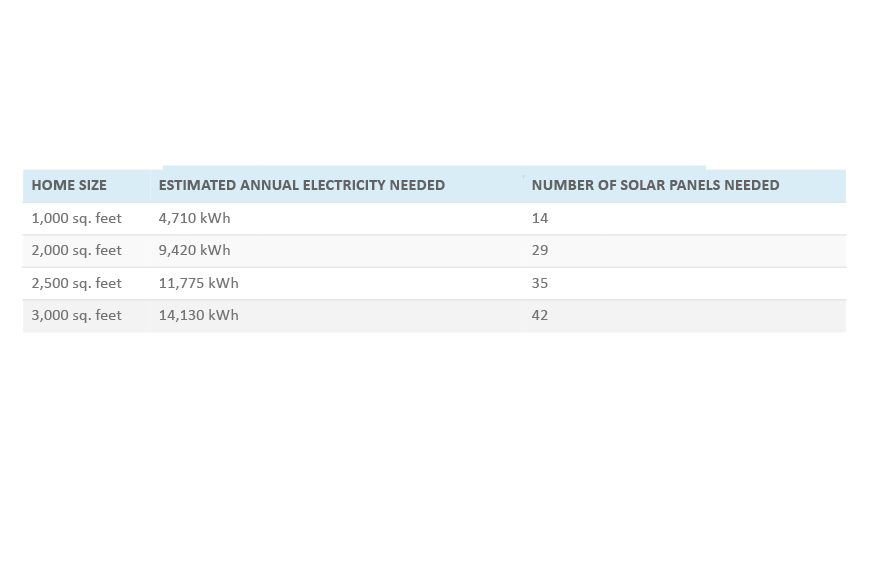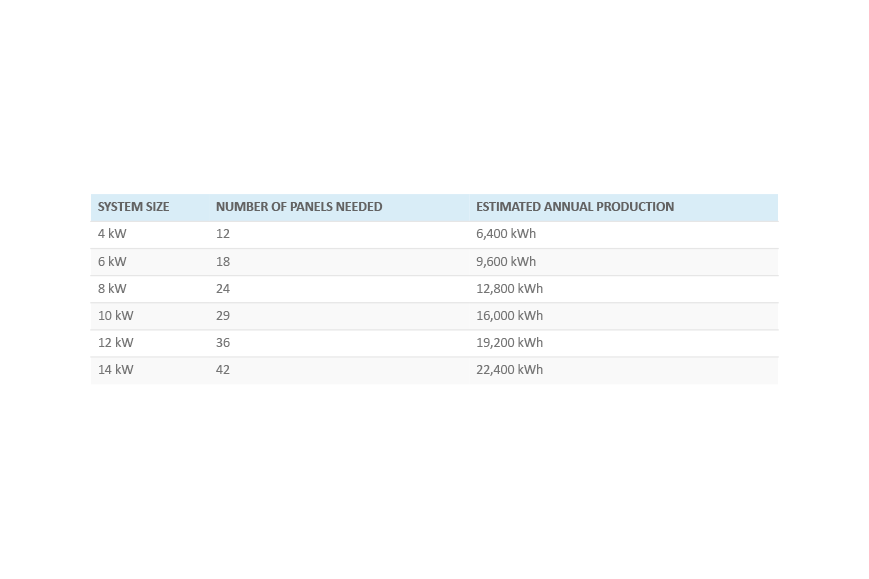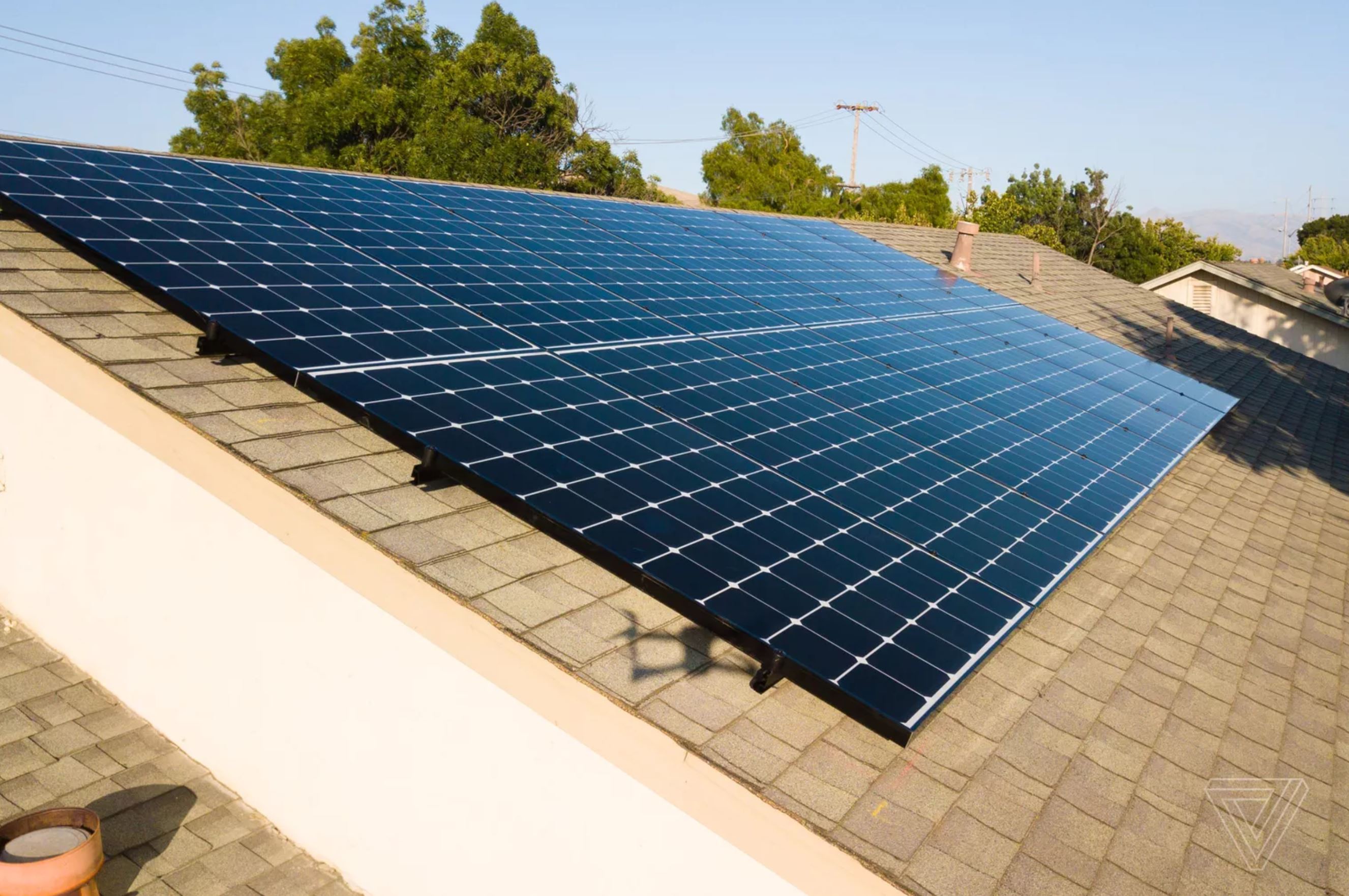When you decide to install a solar energy system for your home or business, one of the most critical questions you’ll need to answer is: How many solar panels do I need for a 6kW system? Understanding how to size your solar system is essential, not only for meeting your energy needs but also for optimizing your investment.
A 6kW solar system represents a system capable of producing 6 kilowatts (kW) of electricity under optimal conditions. Kilowatts are a measure of power—specifically, the amount of energy generated or consumed per hour.
To put it simply, a 6kW system can generate 6,000 watts of electricity per hour (under ideal conditions). This capacity is important when estimating the amount of energy you’ll need to power your home or business.
Average Energy Output of a 6kW System
The energy produced by a 6kW system depends on several factors like the type of solar panels you use, the location of the installation, and environmental conditions. However, on average:
- A 6kW solar system can produce around 24 kWh to 30 kWh per day.
- Yearly production: This could add up to between 8,000 kWh and 10,000 kWh annually.
If you live in an area with lots of sunlight (e.g., Arizona or California), your system might produce closer to the higher end of this range. Conversely, if you live in a place with frequent cloud cover or less sunlight, the energy production will likely be lower.
This daily output can help you assess whether a 6kW system will meet your energy needs. For example, if your average monthly electricity usage is around 600 kWh, a 6kW system could more than cover your needs.

How Many Solar Panels Do You Need for a 6kW Solar System?
Now that you have a solid understanding of what a 6kW solar system is and how much energy it can produce, the next question is: How many solar panels do you need for a 6kW system?
The answer to this depends on the wattage of the solar panels you’re using. Solar panels typically range from 250 watts to 400 watts each, with the most common panels being around 300 watts.
Average Power Output of a Solar Panel
To figure out how many panels you’ll need, it’s essential to know how much power a single solar panel can generate. Most residential solar panels fall within the following wattage ranges:
- 250W panels – Common for older or lower-cost systems.
- 300W panels – The standard and most commonly used panel for residential solar systems today.
- 400W panels – High-efficiency panels that generate more electricity in the same amount of space.
For a 6kW solar system, you’ll need to figure out how many of these panels you’ll need to meet your energy needs.
Calculating the Number of Panels for 6kW
Let’s use an example to calculate the number of panels needed for a 6kW system.
- 6000W ÷ 300W panel = 20 panels.
- If you’re using 300W solar panels, you would need 20 panels to achieve a total system size of 6kW.
- 6000W ÷ 350W panel = 17 panels.
- If you opt for slightly more powerful panels, like 350W panels, you would only need 17 panels.
- 6000W ÷ 400W panel = 15 panels.
- For high-efficiency 400W panels, you would need 15 panels to reach 6kW.
Impact of Panel Wattage on Panel Count
The wattage of the panels you choose significantly impacts how many panels you’ll need for your 6kW system. Higher-wattage panels (e.g., 350W or 400W) produce more power per panel, meaning you’ll need fewer panels to reach your desired system size.
For example, if you install 300W panels, you’ll need 20 panels for a 6kW system. But if you install 400W panels, you’ll only need 15 panels, a reduction of 5 panels. This difference in panel count can significantly affect the overall cost of the system, as well as the amount of roof space required for installation.
Here’s a summary table of the number of panels needed for a 6kW solar system at different panel wattages:
| Panel Wattage | Number of Panels Needed |
|---|---|
| 250W | 24 Panels |
| 300W | 20 Panels |
| 350W | 17 Panels |
| 400W | 15 Panels |
Factors That Influence Panel Requirements
While the wattage of the solar panels is the most straightforward way to calculate how many you’ll need for a 6kW system, there are other factors that can influence this number, including:
- Roof Space: The more panels you need, the more roof space is required. This is particularly important if you have a small or shaded roof area.
- Panel Efficiency: Higher-efficiency panels produce more power per square meter, allowing you to install fewer panels. While these panels may cost more upfront, they can save space and be more cost-effective in the long term.
- Location: The amount of sunlight your location receives (measured in “solar irradiance”) can affect how much energy your panels produce. In areas with frequent cloud cover, you may need more panels to compensate for lower energy production.
Factors Affecting How Many Solar Panels You Need for 6kW
While the wattage of the solar panels gives a straightforward calculation for determining the number of panels needed for a 6kW system, several external factors can influence this number. These factors range from geographic location and roof space to panel efficiency and weather conditions. Understanding these variables will help you make a well-informed decision when designing your solar system.
Location and Solar Irradiance
The location of your solar installation is one of the most critical factors. Solar irradiance, or the amount of sunlight your area receives, directly impacts the efficiency and output of your solar panels.
- Sunlight Hours: Areas with higher solar irradiance, such as the southwestern United States, will require fewer panels compared to regions with lower irradiance, like the Pacific Northwest.
- Solar Map Insights: According to solar energy maps, sunny locations like Phoenix or Las Vegas receive around 6-7 peak sunlight hours per day, whereas places like Seattle or London might only get 3-4 hours.
| City | Average Daily Sunlight Hours | Panels Needed for 6kW (300W) |
|---|---|---|
| Phoenix, AZ | 6.5 | ~20 Panels |
| San Francisco, CA | 5.5 | ~22 Panels |
| New York, NY | 4.5 | ~24 Panels |
| Seattle, WA | 3.5 | ~29 Panels |
- Case Study: A homeowner in Phoenix installing 300W panels might only need 20 panels to generate 6kW due to high irradiance. Meanwhile, a homeowner in Seattle may need closer to 29 panels to achieve the same energy output because of reduced sunlight hours.
Roof Space and Panel Arrangement
Roof space is another essential consideration when determining the number of panels for a 6kW system.
- Space Requirements: Each standard 300W panel occupies about 1.7 square meters (18 sq. ft.). For a 6kW system using 300W panels, you would need approximately 34 square meters (370 sq. ft.) of roof space.
- Orientation and Shading: Panels should ideally face south in the northern hemisphere to maximize sunlight exposure. Shade from trees, chimneys, or neighboring buildings can significantly reduce panel output.
- Tilt and Angle: The optimal tilt for solar panels matches your latitude, but adjustable racks can enhance energy capture during different seasons.
Solar Panel Efficiency
Solar panel efficiency plays a significant role in determining how many panels you’ll need.
- High-Efficiency Panels: Modern high-efficiency panels like those from SunPower or LG can exceed 22% efficiency, generating more power per square foot. This means fewer panels are required for the same output.
- Standard Panels: Typical monocrystalline or polycrystalline panels have efficiencies ranging from 15% to 20%.
Example: A 6kW system using standard 300W panels with 15% efficiency might need 20 panels, whereas a system with 400W high-efficiency panels at 22% efficiency would need just 15 panels.
Tilt Angle and Orientation
- Optimal Orientation: Solar panels should ideally face true south in the northern hemisphere or true north in the southern hemisphere.
- Tilt Angle: The ideal tilt angle matches the installation site’s latitude. For example, a home in Denver (39° latitude) should tilt panels at about 39 degrees for maximum efficiency.
- Adjustable Mounts: Seasonal adjustments can further optimize energy production by aligning panels more directly with the sun.
Weather and Seasonal Variations
Weather conditions and seasonal changes also affect solar panel performance.
- Cloud Cover: On cloudy days, solar panels produce less energy, sometimes as low as 10-25% of their rated capacity.
- Temperature: Interestingly, high heat can slightly reduce panel efficiency. Panels operate best in cooler, sunny conditions.
- Seasonal Output: Winter months yield less energy due to shorter days and a lower sun angle, whereas summer months often produce a surplus.
![how many solar panels do i need to power a house [check out] how many solar panels do i need to power a house [check out]](https://enlivenarticles.com/wp-content/uploads/2020/04/how-many-solar-panels-do-I-need.jpg?189db0&189db0)
Alternative Solar Panel Configurations for Different Needs
When deciding how many solar panels you need for a 6kW system, there are different configurations depending on your specific energy goals, space availability, and whether you’re looking for a residential or commercial system. Let’s explore some alternative setups that could affect the total number of panels required and how you can adjust for different needs.
Residential Solar Systems vs. Commercial Solar Systems
The size and requirements for a 6kW solar system will vary greatly between residential and commercial installations.
- Residential Solar Systems: A 6kW solar system is considered large for residential purposes. Most homeowners typically install systems ranging from 3kW to 10kW, depending on their energy usage.
- Example: For a 6kW residential system using 300W panels, you would need about 20 panels. This size is ideal for an average home with 4-5 occupants consuming around 600-800 kWh/month. A 6kW system would cover most or all of the home’s electricity needs, especially in sunny regions.
- Commercial Solar Systems: Commercial installations often require larger systems to meet the needs of bigger facilities. However, a 6kW system could still be appropriate for smaller businesses, storefronts, or offices that have lower electricity demands.
- Example: A small office building may need only 6kW to meet its energy requirements, whereas a larger commercial building would likely need more panels and a bigger system.
Grid-Tied vs Off-Grid Solar Systems
Choosing between a grid-tied or off-grid solar system can affect how many solar panels you need.
- Grid-Tied Systems: These systems are connected to the public electricity grid. They allow you to send excess energy back to the grid and draw from it when needed, providing backup power.
- Number of Panels: For a 6kW grid-tied system, you’ll still need approximately 20 panels (using 300W panels). The key difference is that with a grid-tied system, you don’t need batteries for storage, which can save on space and costs.
- Off-Grid Systems: These systems are completely independent of the electrical grid and require battery storage to store excess energy for use when the sun isn’t shining.
- Number of Panels: With an off-grid system, you may need additional panels to ensure you have enough power to cover cloudy days or during high energy consumption periods. For instance, an off-grid system might require 25-30 panels to achieve a 6kW capacity, plus batteries to store the energy.
- Example: If you’re in a rural location or remote area without reliable access to the grid, opting for an off-grid system may result in needing more panels to make up for energy storage requirements.
Adding Battery Storage to Your Solar System
Battery storage plays an important role in how a solar system operates, especially in off-grid installations. However, even in grid-tied systems, adding batteries can provide energy independence and protection against power outages.
- Impact on Panels: Adding batteries doesn’t necessarily change the number of panels required to reach a 6kW system, but it can affect the overall cost and space requirements. The batteries themselves require space and add extra costs to the installation. A Tesla Powerwall (13.5kWh storage capacity) could complement a 6kW system by allowing you to store excess energy for nighttime or cloudy days.
- Battery Storage Calculation: For a 6kW system with storage, you’ll likely need to increase your energy production. For example, if you plan on using 30% more energy than a grid-tied system (for battery storage), you could calculate needing additional panels—about 1-2 more panels (depending on the efficiency of your system).
- Case Study: A homeowner with a 6kW solar system in California who adds 2 Tesla Powerwalls may only need 22 panels (if using 300W panels), accounting for both energy storage and average daily consumption.
